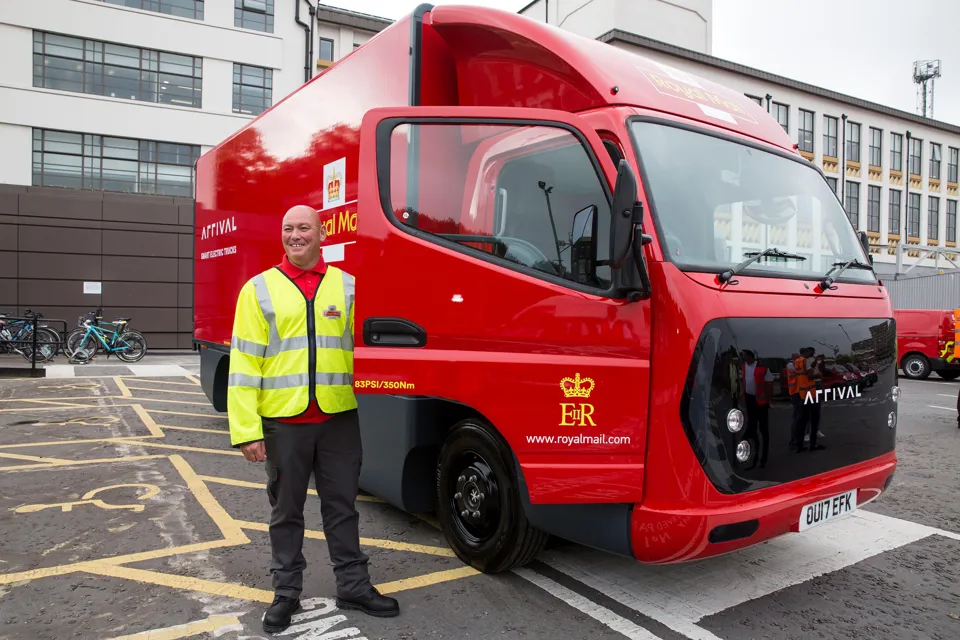The real-world implications of operating low and zero emission vehicles are challenging, says the lead engineer at the UK’s largest commercial vehicle fleet.
As head of fleet engineering at Royal Mail, Grahame Bennett is responsible for 48,000 vehicles. He says the postal delivery organisation is faced with making long-term investments in technology that is still being developed, at a time when business demands are changing rapidly.
The number of letters sent, for example, is in decline, while parcel deliveries are increasing significantly. These are developments that require different volumetric requirements from vehicles which have to meet ever-stricter emissions regulations.
Royal Mail keeps its vans for seven years and its heavy commercial vehicles for a decade, meaning decisions made today have consequences far beyond the scope of current regulations.
How long, for example, will the clean air zones proposed for cities such as London, Birmingham, Nottingham and Leeds allow Euro 6 diesels to enter without charge? And when will Euro 6-plus or Euro 7 come into force?
“Nobody has said the period of time that Euro 6 will be the standard that we need to meet,” Bennett told Commercial Fleet. “We are seeing a huge number of initiatives coming to major cities, and, as a company that delivers across the whole of the UK, we have got to consider all of those.”
These initiatives include unintended consequences. In Leeds, a Royal Mail workshop initially found itself inside the boundaries of the proposed clean air zone. This would have meant that vehicles which make no deliveries within the zone would still have faced a charge every time they went into the workshop for maintenance. Fortunately, conversations with the city authorities brokered during a roundtable held by BVRLA, Energy Saving Trust, ACFO and Fleet News, resulted in the proposed boundaries being redrawn to ensure the busy workshop is now outside the clean air zone.
But with a fleet that is steadily ageing – its average vehicle is five years old – Royal Mail needs to identify how best to deploy the £55 million it spends on its fleet annually, a budget that “just about allows us to stand still”, said Bennett.
A large-scale trial of electric vehicles has seen it test 100 Peugeot Partner L2 electric vans across 17 delivery offices. The fleet is also exploring opportunities to track its vehicles in order to identify those with a daily route that could be met by electric vehicle range. And in a further step towards a green future, Royal Mail has held discussions about vehicle-to-grid (V2G) technology, which could see a fleet of electric vans supply power back to the national grid at peak times.
“We will look at how many of our delivery routes could actually be done by an electric vehicle, and what capacity would be left to return to the grid,” said Bennett. “At 6pm, when all those vehicles are back in the depot, we could return to the grid at peak times and draw that back later in the night.”
While there are a handful of competing zero-emission options in the small- and car-derived van sector, finding a viable alternative to a diesel-powered large panel van is proving much tougher.
“When you talk to some providers about converting vehicles to electric, you walk away very quickly from the conversation when the price comes out. At the moment there isn’t that market range in that area to provide those vehicles,” said Bennett.
Both the Royal Mail and UPS are working with the technology firm Arrival on the development of an all-new electric 3.5-tonne van, which has the potential to make serious waves in the delivery market.
Last August, Royal Mail deployed an Arrival electric six-tonne truck in London and analysis of on-board data has helped to identify where its performance could be improved.
“We have seen some huge changes in the software that has changed how that vehicle works,” said Bennett. “From August to January, we saw a 15% increase in battery efficiency, just from the software controls.”
For the heaviest commercial vehicles, weighing in at 44 tonnes, he sees a bright future for gas as a replacement for diesel, and has already placed orders.
“From a fleet engineering and operating costs perspective it’s a no-brainer,” said Bennett.





















Login to comment
Comments
No comments have been made yet.